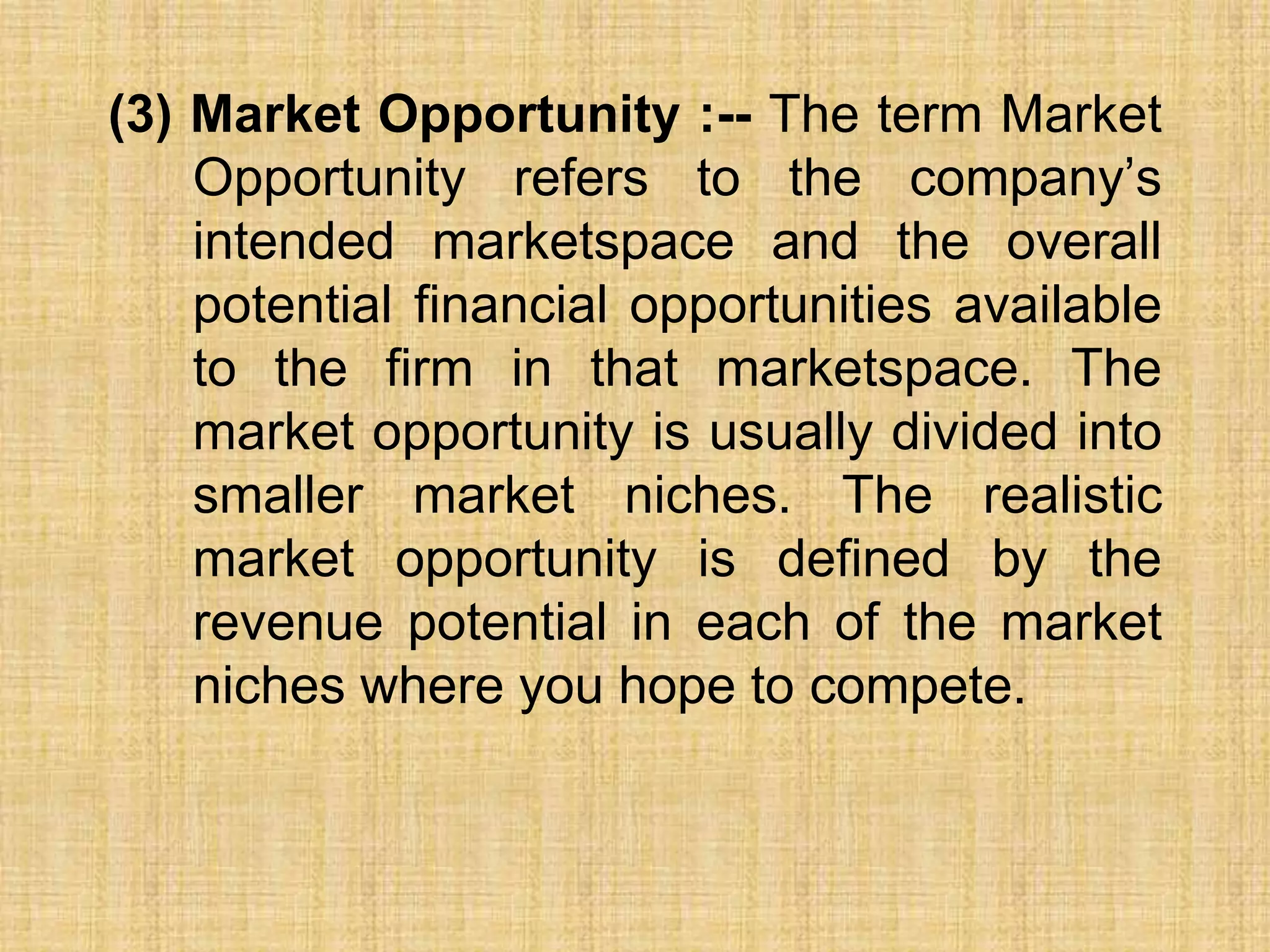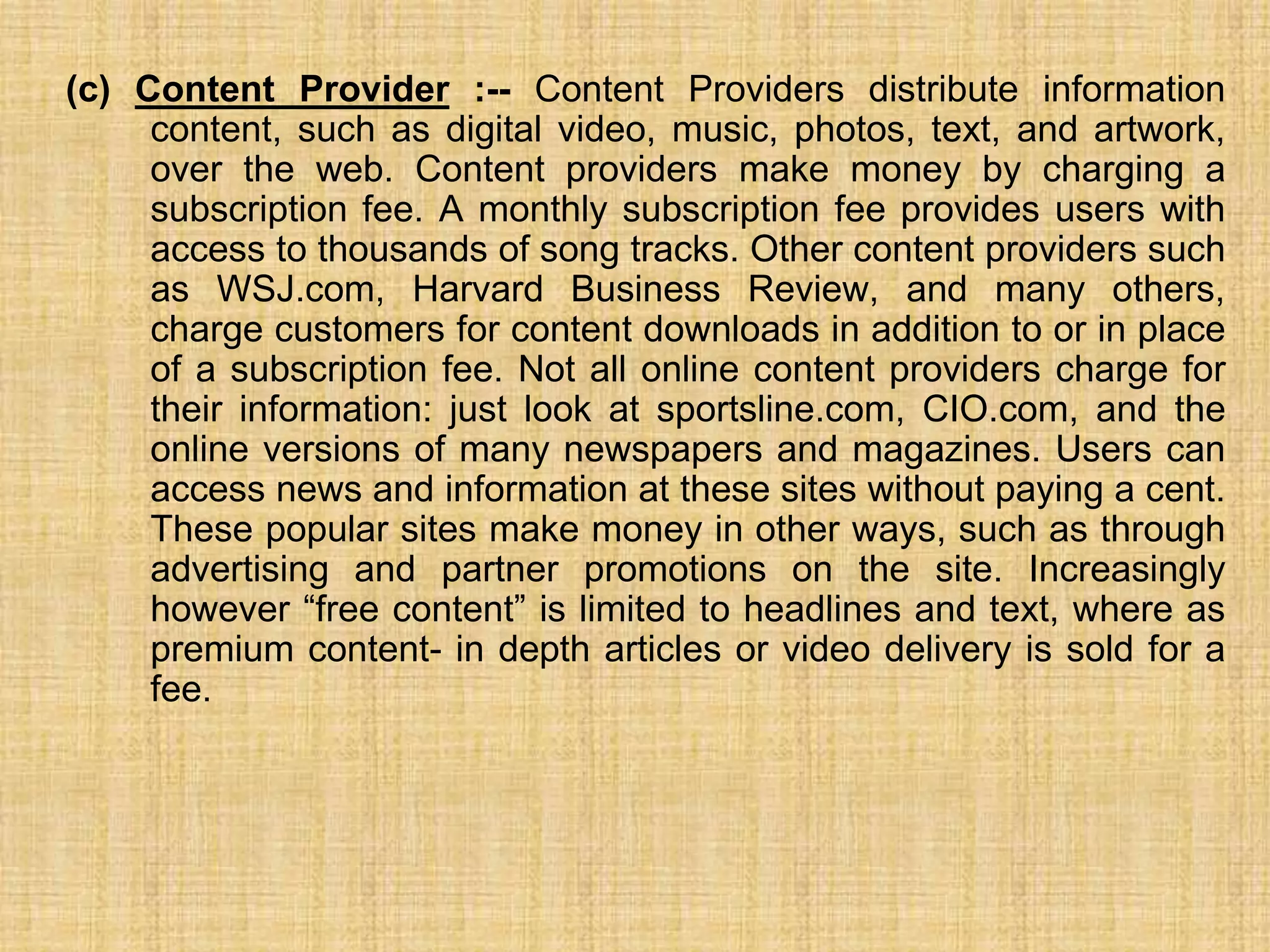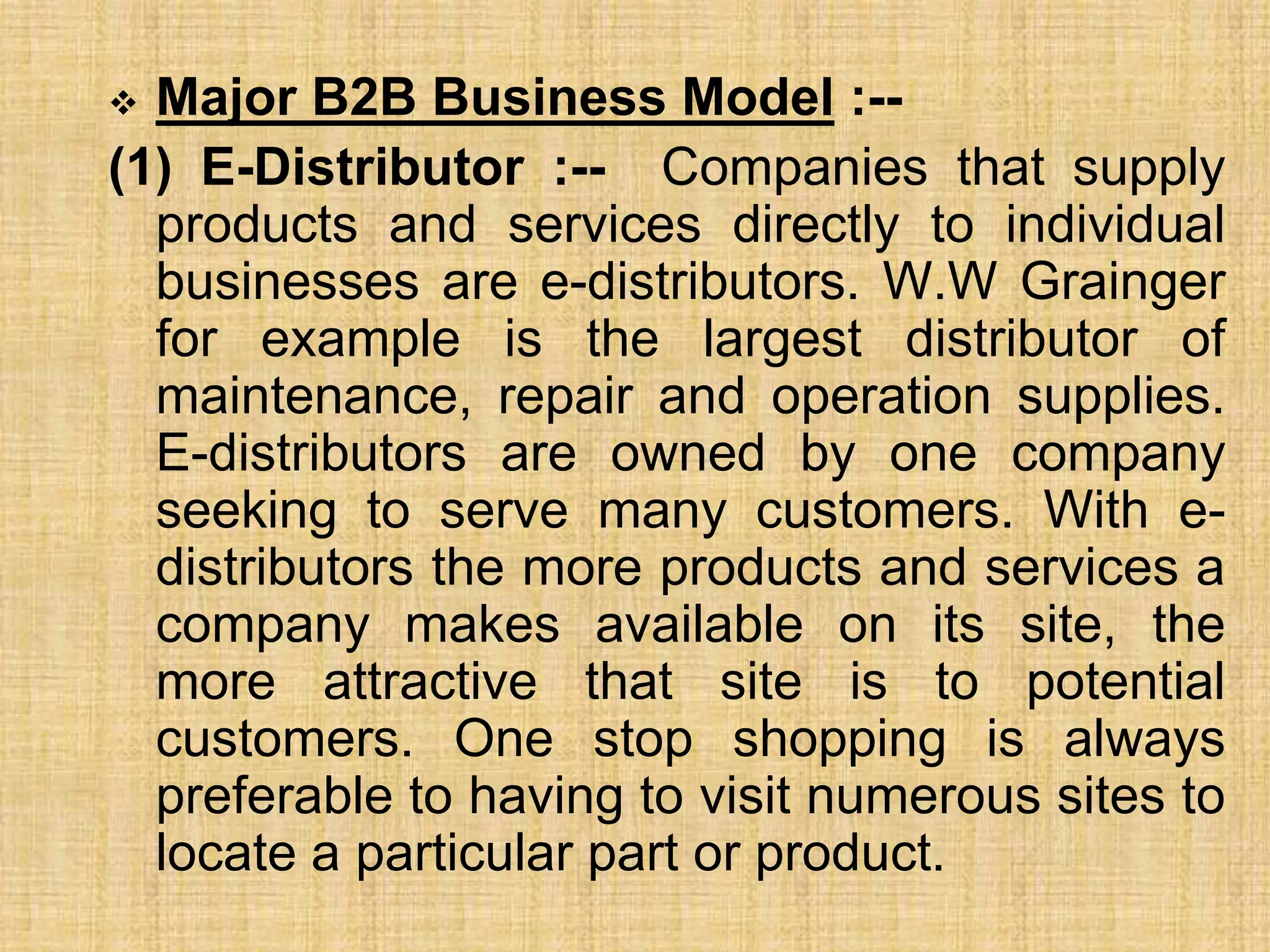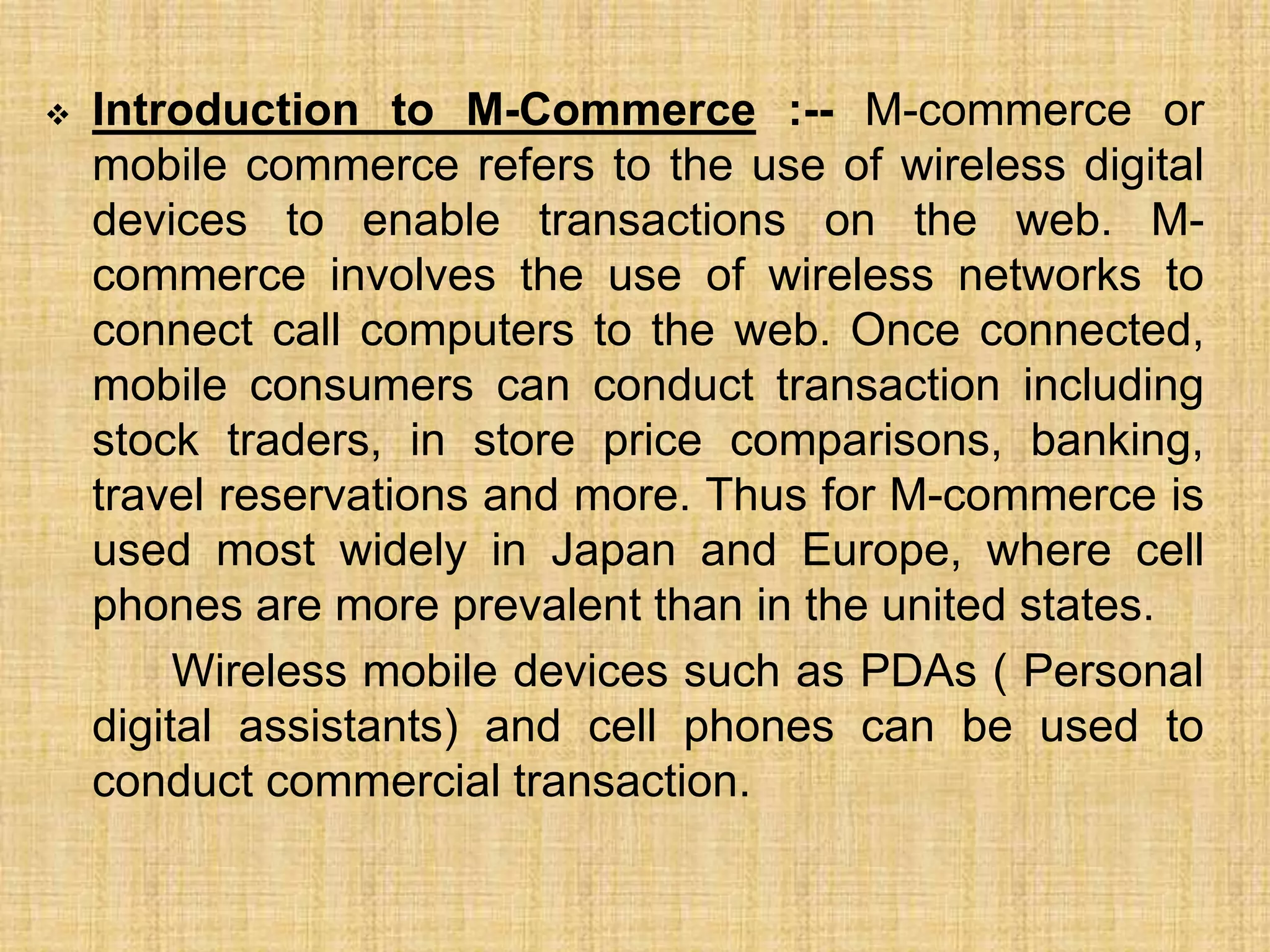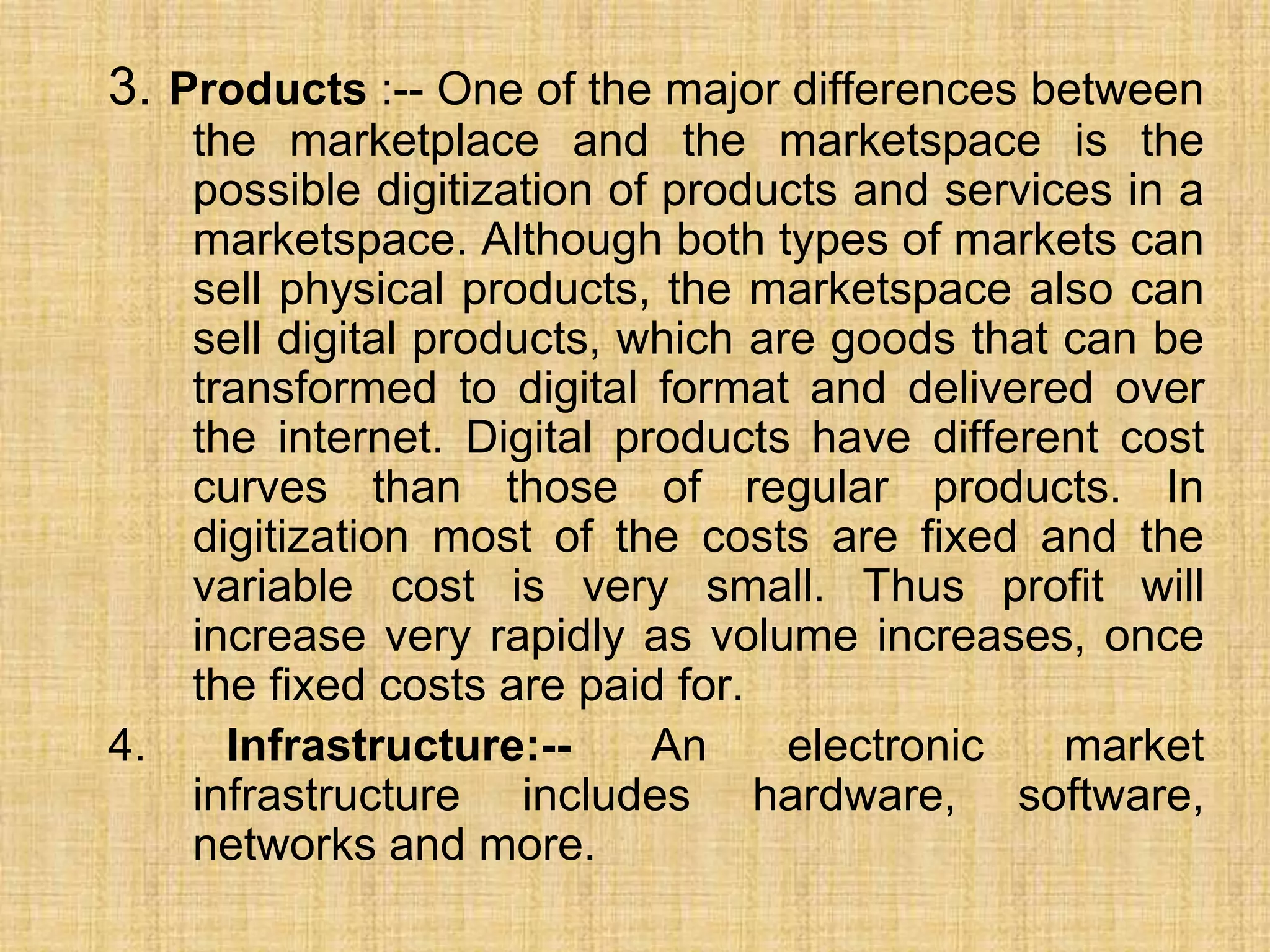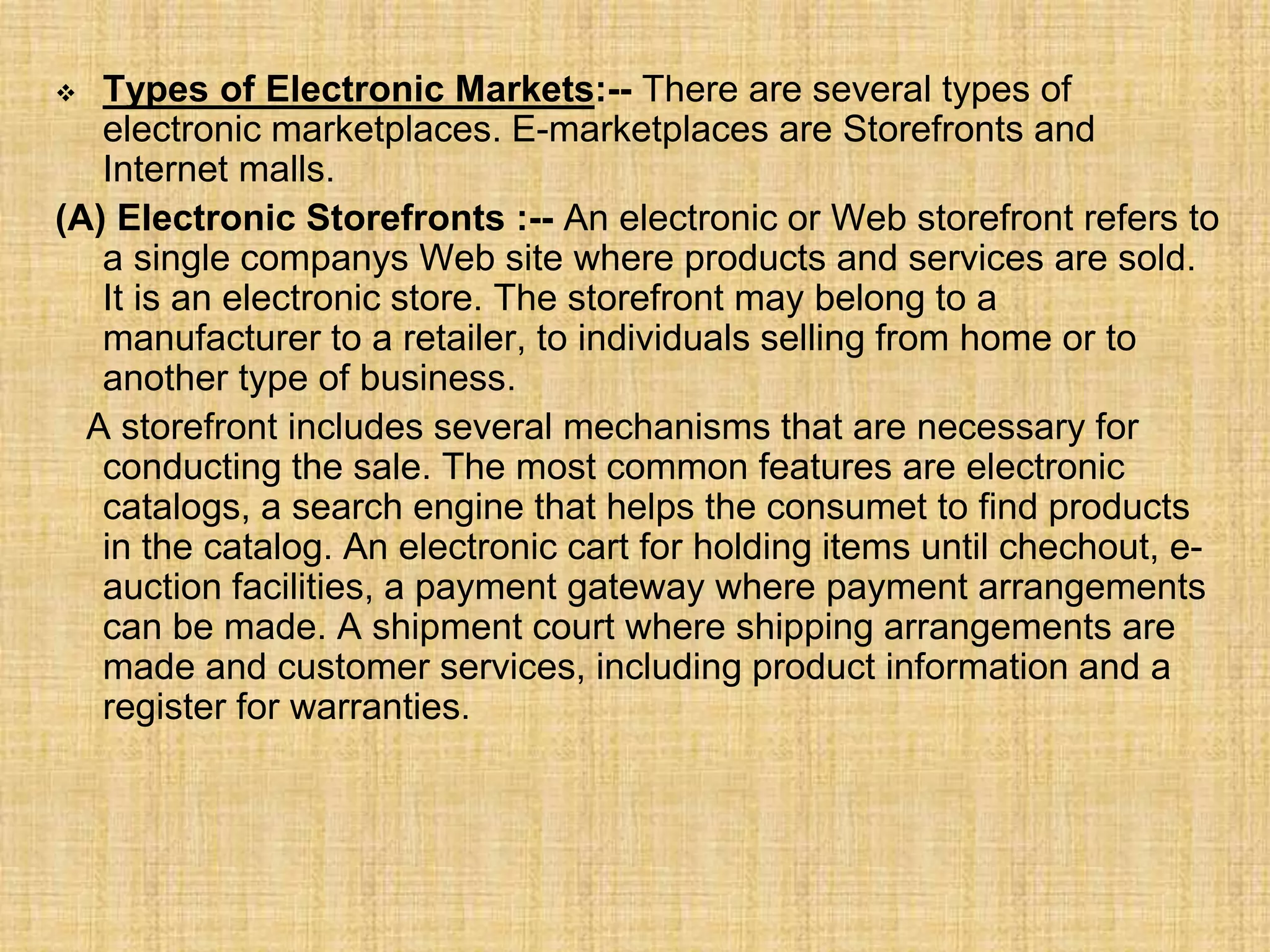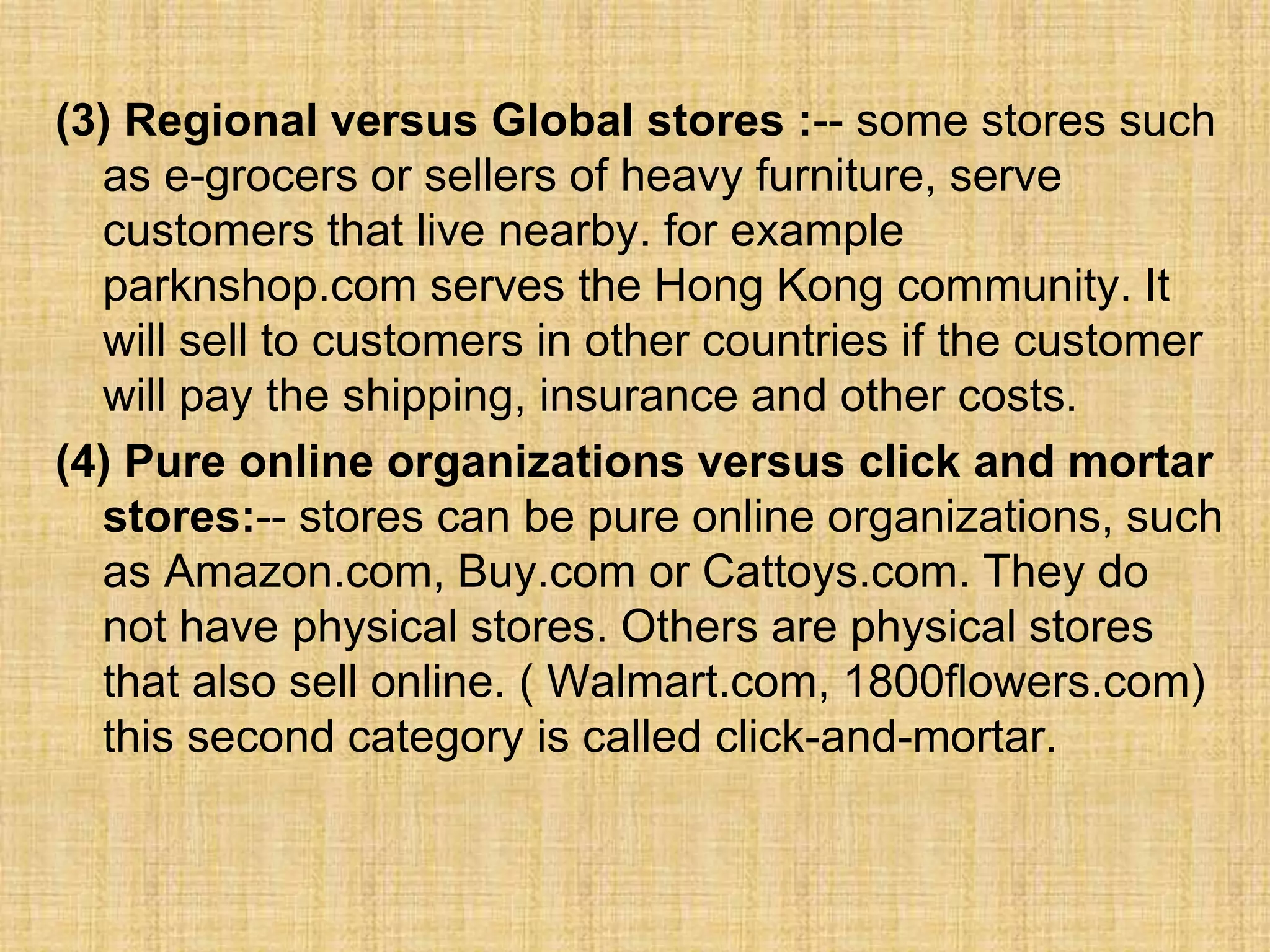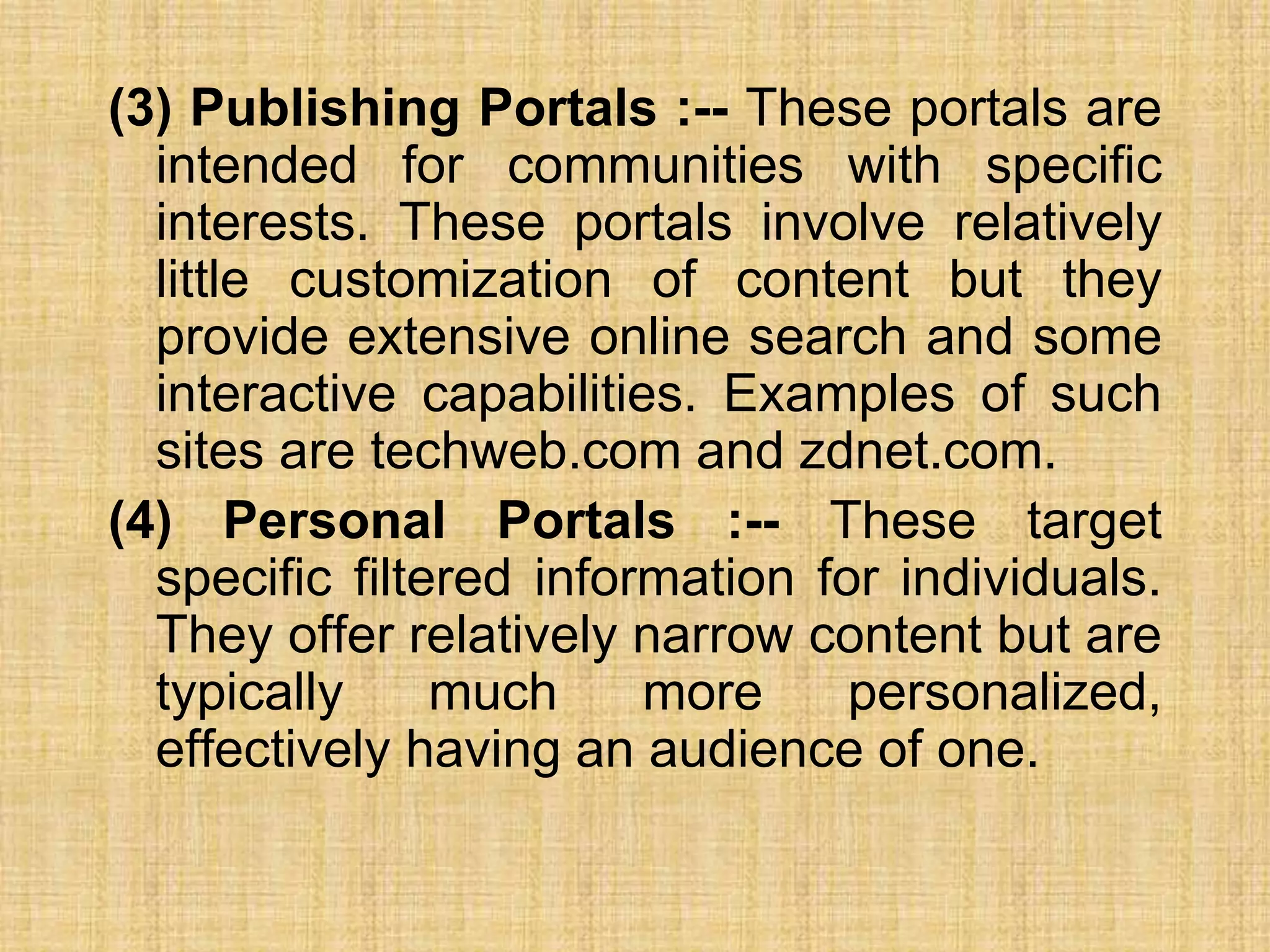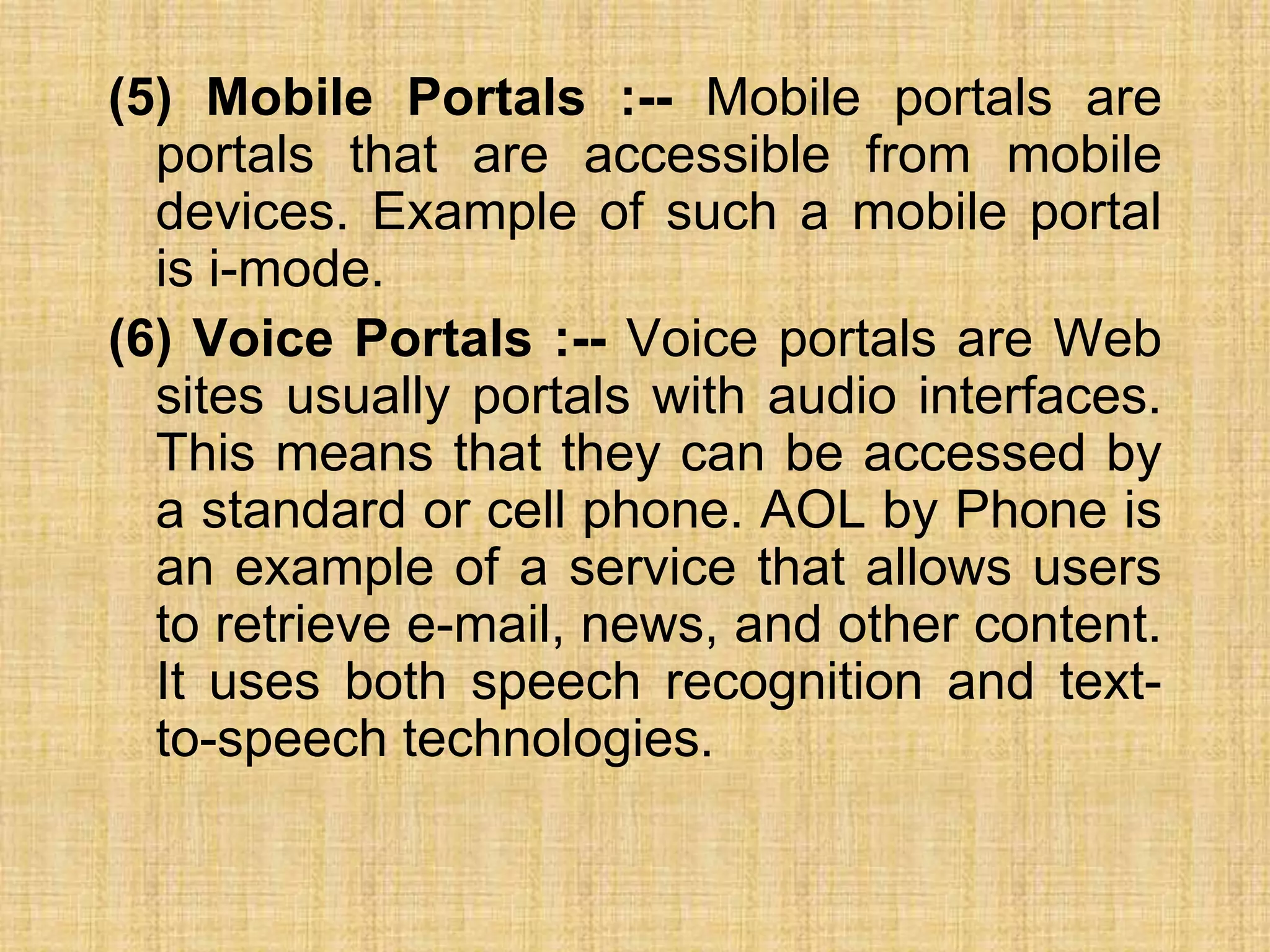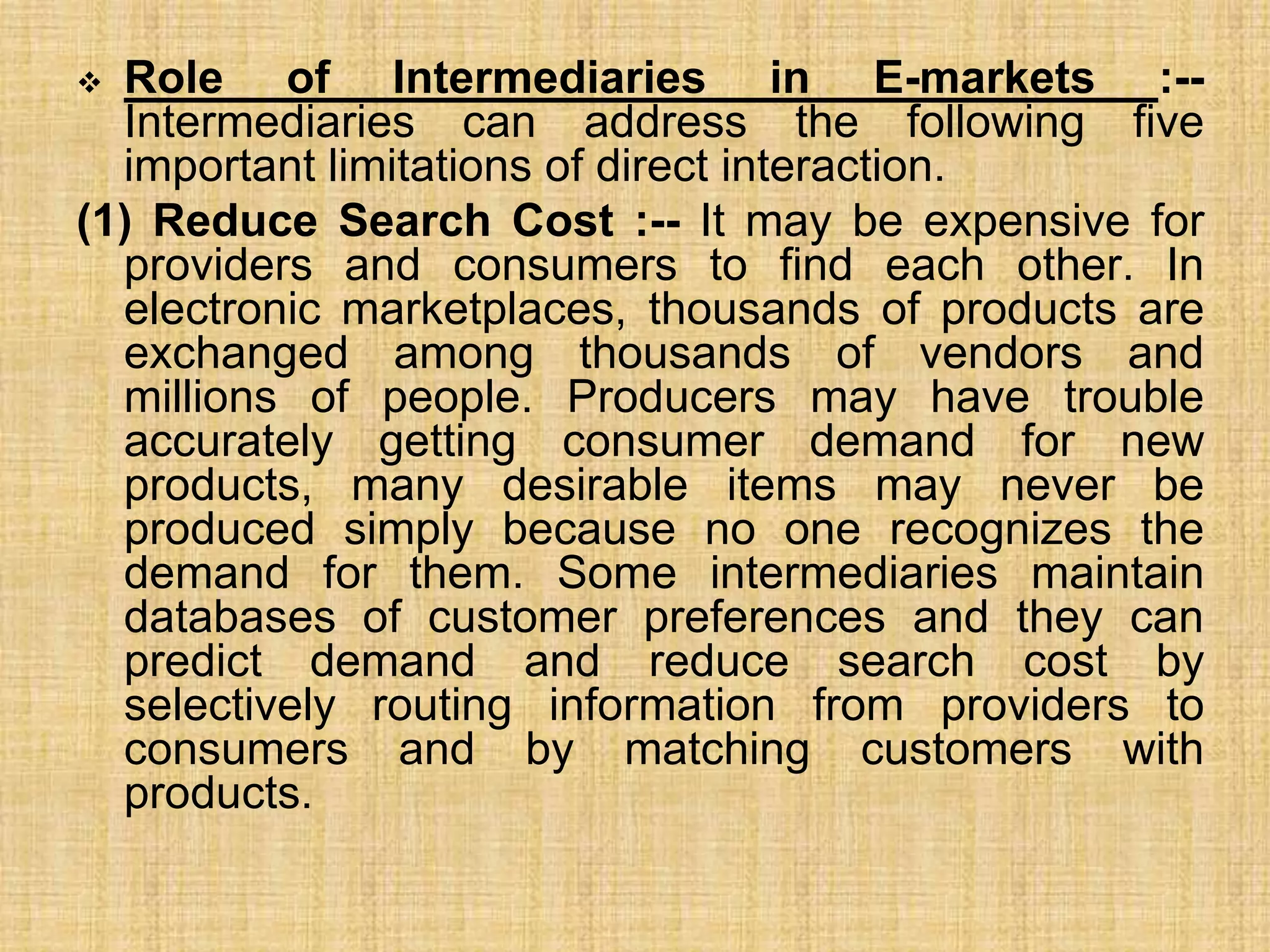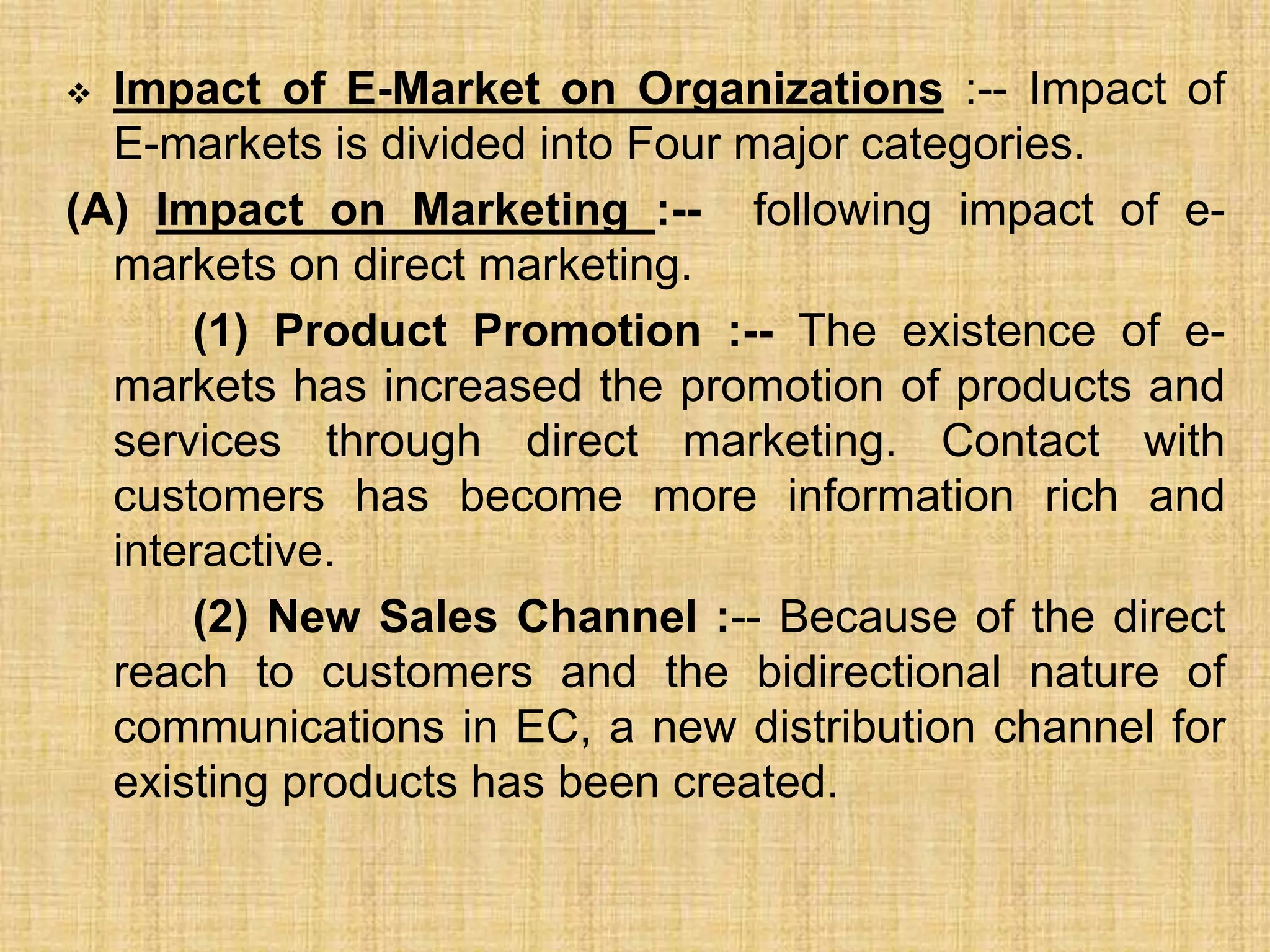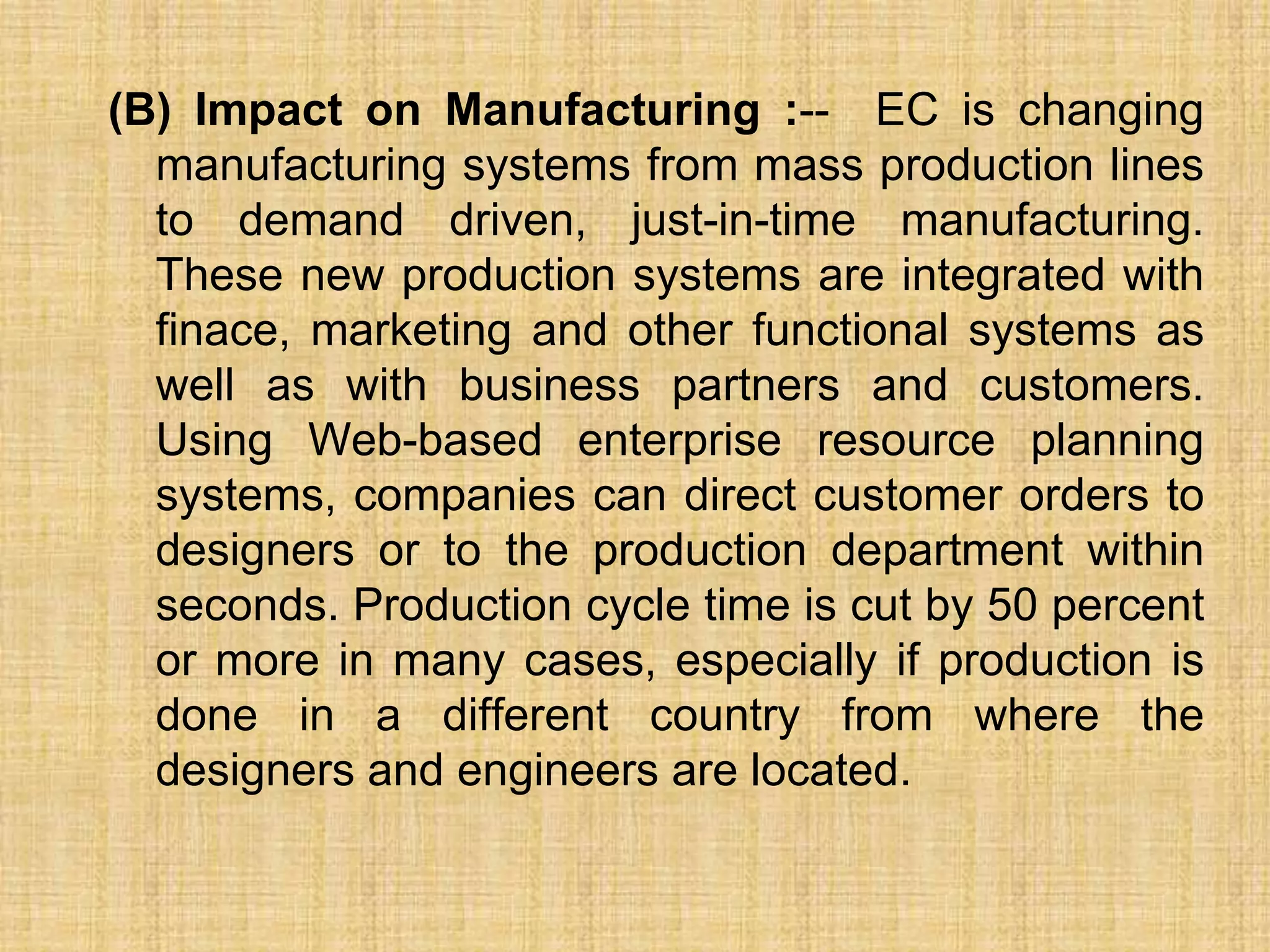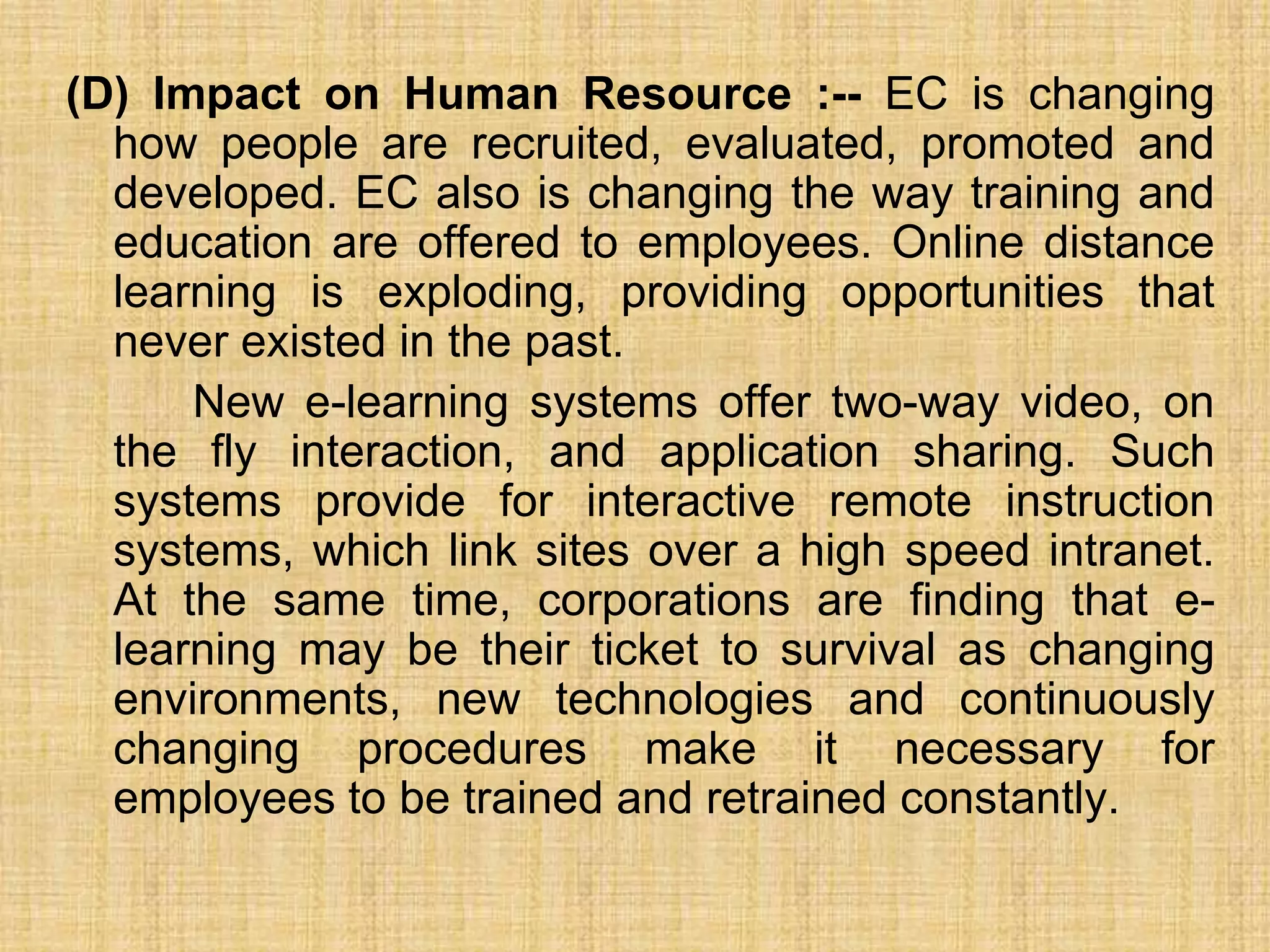This document discusses business models for e-commerce. It outlines eight key ingredients for a successful business model: value proposition, revenue model, market opportunity, competitive environment, competitive advantage, market strategy, organizational development, and management team. It then describes various business-to-consumer and business-to-business e-commerce models like portals, e-tailers, content providers, and e-distributors. Finally, it discusses components of online marketspaces such as customers, sellers, products, and infrastructure.







